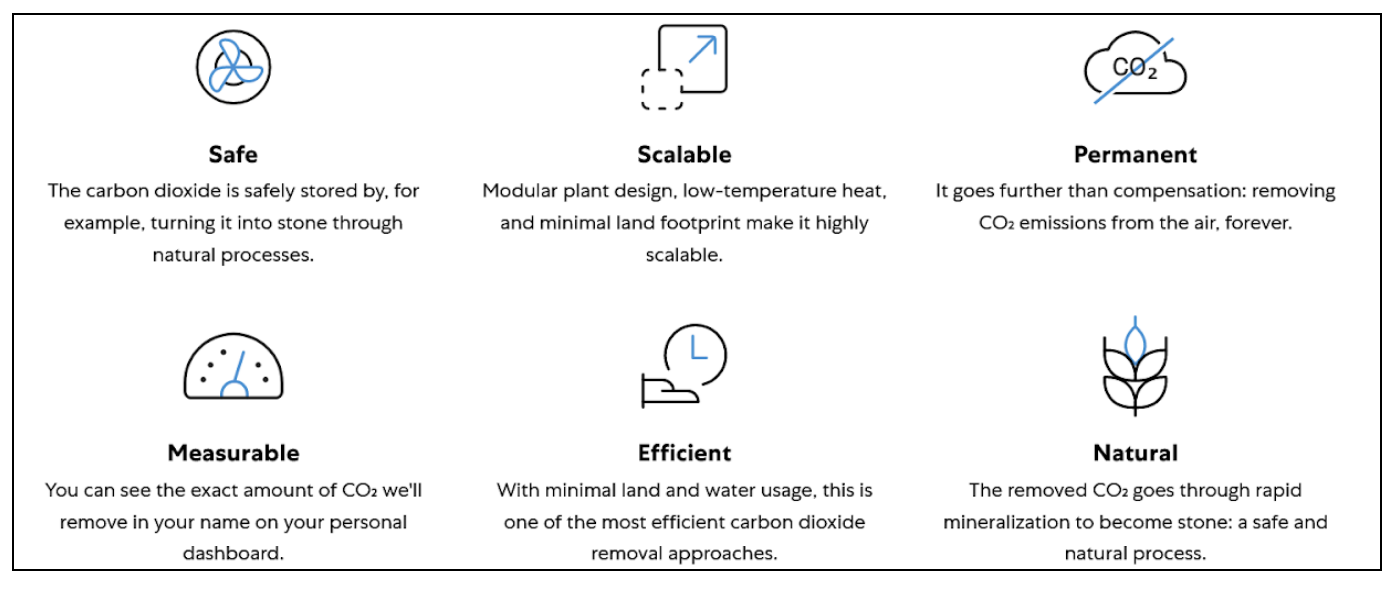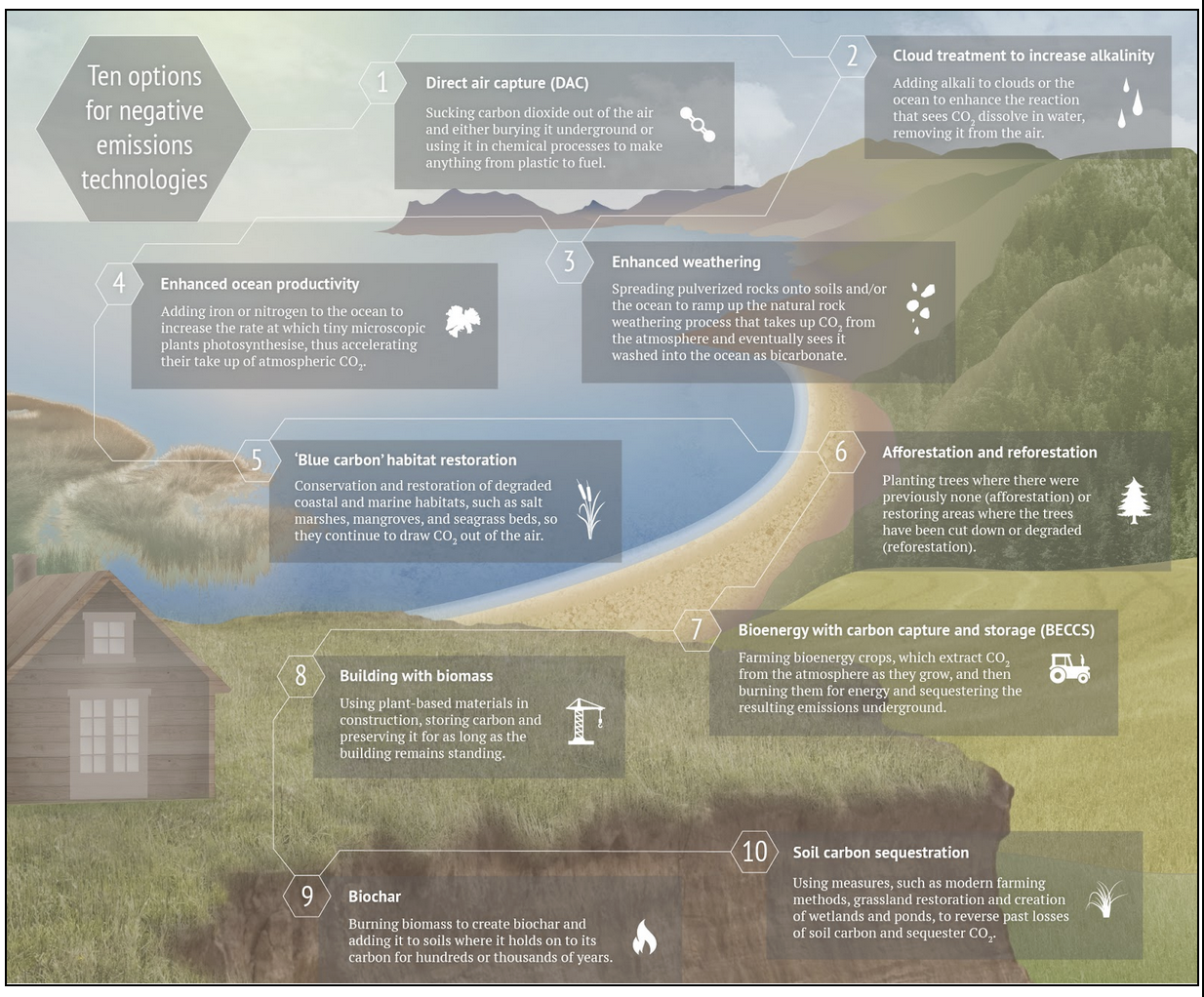GS Paper III
News Excerpt:
Climeworks has opened the world’s largest operational direct air capture (DAC) plant to suck carbon dioxide out of the atmosphere, with its Mammoth plant in Iceland almost ten times larger than the current record holder.
- Worsening climate change and inadequate efforts to cut emissions have led U.N. scientists to estimate billions of tons of carbon must be removed from the atmosphere annually to meet global climate goals.
What is direct air capture?
- Direct air capture (DAC) technologies extract CO2 directly from the atmosphere at any location, unlike carbon capture which is generally carried out at the point of emissions, such as a steel plant.
- DAC works by using a technical process to suck carbon dioxide (CO2) out of the air and store it, usually underground.
- The CO2 can be permanently stored in deep geological formations or used for a variety of applications.
- The removal process is energy intensive, but Climeworks' plants in Iceland are powered by the country's renewable geothermal power plants.
- Critics of the technology say it is expensive and warn focusing on removing CO2 could deter companies from reducing their emissions as much as possible.
Direct Air Capture plant of Climeworks:
- It is Climeworks' second commercial project, after the Orca plant, also in Iceland, which has a capacity of 4,000 tons a year and was previously the world's largest operational site.
- Climeworks is part of a consortium that has been selected for award negotiations under a U.S. programme for the technology to build a 1 million ton plant.
- The Mammoth DAC plant has a capacity to capture 36,000 metric tons of CO2 a year and will be fully complete by the end of 2024.
The benefits of direct air capture:
Each solution, whether natural or technology-based, has its benefits. Here are the benefits of direct air capture:

What are the challenges?
- Capturing CO2 from the air is the most expensive application of carbon capture.
- The CO2 in the atmosphere is much more dilute than in, for example, flue gas from a power station or a cement plant.
- It contributes to DAC’s higher energy needs and costs relative to these applications.
|
Other Carbon Dioxide Removal methods: Carbon dioxide removal (CDR) involves taking this greenhouse gas out of the atmosphere and storing it underground or under the ocean floor, ideally for a very long time. There are both nature-based and technology-based approaches to CDR. Carbon Sequestration:
Carbon Capture and Storage:
Carbon Stock Protection:
|



